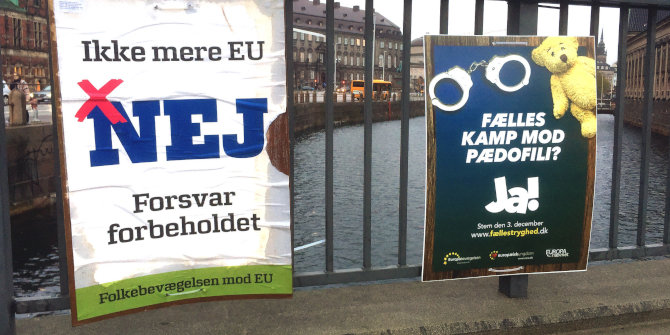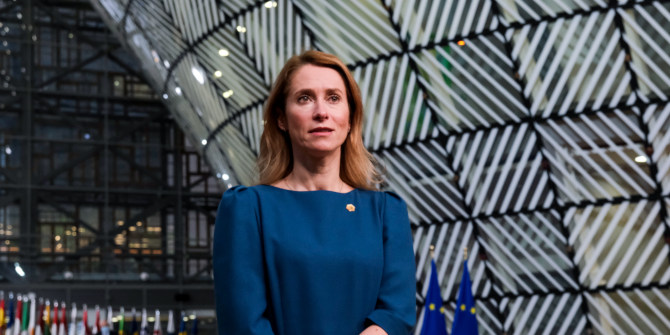The EU has formulated a new Pact on Migration and Asylum, which seeks to make EU asylum politics more realistic, efficient and crisis-proof. Ulrich Krotz and Lucas Schramm argue that for such an asylum regime to become a reality, a ‘Schumanian moment’ will be required, with a number of determined member states coming together and taking concrete steps in this direction. Ultimately, France and Germany must lead the way.
The European Union is once again facing major migratory pressures, a looming humanitarian catastrophe, and political clashes about the adequate measures. Over the course of this year, 20,000 asylum seekers have come to the Canary Islands, and hundreds more are arriving every day. With the local authorities overwhelmed and the EU unable to offer a solution, observers are already warning of a ‘second Moria’, referencing Europe’s largest refugee camp, located on the island of Lesbos. Caught between everyday politics and arduous negotiations about the European recovery fund, leaders risk losing momentum for an overhaul of the EU’s asylum policy.
With its new ‘Pact on Migration and Asylum’ published on 23 September this year, the European Commission has made a renewed attempt to put the EU’s asylum regime on a more realistic, efficient, and crisis-proof basis. The Pact gained additional importance after fires destroyed the overcrowded Moria refugee camp, leaving almost 13,000 people without shelter. In the following days, Germany, France, and seven other EU countries announced the admission of about 2,000 unaccompanied minors and already recognised refugees from Moria and other Greek islands, while the remaining member states refused to admit any refugees.

Credit: The Left (CC BY-NC-SA 2.0)
The Moria incident and the reactions to it illustrated the divisiveness within the EU when it comes to the handling of asylum seekers. In its new Pact, the Commission better accounts for the different national concerns and interests. It suggests combining more restrictive measures – like the acceleration of asylum procedures and the faster return of migrants without valid asylum claims – with a measure of solidarity, such as relief for border countries and an EU-internal relocation procedure if migratory pressures are extraordinarily high. EU countries’ immediate reactions were positive, but a political agreement on the Pact’s basic principles and the way ahead are still pending.
In May this year, in search of financial support for the fight against the Covid-19 pandemic, France and Germany suggested a European recovery fund financed through joint EU debt – a plan ultimately endorsed by other member states. Observers characterised this move as ‘Europe’s Hamiltonian moment’ in reference to the joint issuing of government debt in the early phases of the United States of America. France’s President Macron and Germany’s Chancellor Merkel received much praise for their political leadership as they managed to overcome initial differences, took bold steps, and later enabled a European compromise at large.
The EU’s permanent asylum crisis
Asylum policy is an area that presents even greater challenges for the cohesion and future of the EU. It is arguably one thing to make political deals on the raising and distribution of EU funds, but quite another to make progress on much more contested and identity-related policies. Ever since the major crisis in 2015, member states have continued to clash over how to deal with the asylum seekers arriving in Europe. The EU risks being caught in a permanent asylum crisis, causing lasting damage to the European integration process.
Strikingly, and unlike any other recent EU crises, France and Germany have exercised very little political leadership in this policy field. For illustration, consider the following three examples where Franco-German leadership was either entirely absent or unsuccessful.
First, to cope with the high number of asylum seekers in 2015, the German answer was essentially to impose a quota system against the expressed will of several member states. France, by contrast, only half-heartedly supported a fixed quota. In the end, the quota system largely failed and expired in September 2017, with only a fraction of the planned number of refugees having been relocated.
Second, when Merkel in 2016 approached Turkey with the aim of reducing migration to Europe, France and other EU countries were completely absent. The EU-Turkey deal indeed decreased the number of asylum seekers arriving in Europe, but was largely seen as Germany going it alone, feeding suspicion of German dominance within the EU.
And third, both German policymakers and Macron (most recently in early November) announced financial penalties and potential exclusion from the Schengen area if the foremost eastern EU countries continued their refusal to accept refugees. These threats, however, never materialised, primarily because France and Germany had to recognise that they had little means to force particular EU countries to receive refugees (or to induce refugees to go and stay in these countries).
A Schumanian moment in asylum politics
What is thus needed is another Schumanian moment, this time in European asylum policy. The term ‘Schumanian’ refers to Robert Schuman, the initiator of the European Coal and Steel Community (ECSC) and one of the founding fathers of today’s EU. When making his path-breaking proposal on 9 May 1950 to put French and German coal and steel production under the supervision of a common High Authority, Schuman stated that ‘creative efforts’ were necessary and proportionate to the current challenges. He also argued that no single plan could solve all problems at once, but that concrete and feasible achievements would first create a ‘de facto solidarity’ (solidarité de fait) between the participating countries that would allow for subsequent cooperation and integration.
As in the case of the ECSC some 70 years ago, the concrete details of the new European asylum policy will have to be balanced out and put into concrete legislative acts over time. However, it is crucial to start at one point and make use of moments that bring with them new dynamism and possibilities. Contrary to conventional wisdom, European integration rarely happens in giant leaps but is instead the expression of many incremental steps. It is also important for member states to drive Europe forward not just in times of crisis, as has so often been the case in the past decade. Instead, the EU must learn (again) how to reform and progress in a more normal and coordinated manner.
France and Germany have to lead the way. They must prove that the much-celebrated revival of their bilateral European leadership witnessed during the Covid-19 crisis can also bring concrete results in the even more complex field of asylum. To do so, they must give the Commission proposals weight, substance, and political spin, and they must lead by example. France, due to its great experience and capacities in foreign policy, should explore possibilities for new partnerships and return agreements with third countries. Germany, by contrast, thanks to its domestic conditions, could signal that it might take in higher numbers of recognised refugees, implying that other member states will follow.
If necessary, France and Germany should be equally prepared to pursue further cooperation and true integration with a reduced number of EU member states. Indeed, it is very likely that this new realistic approach will come at the cost of cohesion. Following Schuman, however, this would not just be a deplorable minimal compromise but rather the basis for a lasting EU policy. And as the history of European integration has shown – not least in the field of asylum, migration, and free-border travel – differentiated integration has been the rule rather than the exception. At the same time, the merits of European cooperation and integration, and of solidarité de fait, have regularly led other countries to follow the EU’s core at a later point in time.
Note: This article gives the views of the authors, not the position of EUROPP – European Politics and Policy or the London School of Economics. Featured image credit: The Left (CC BY-NC-SA 2.0)





